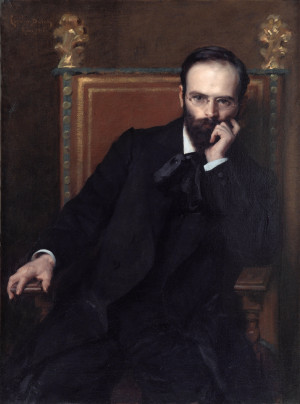Henri Bouchard ( - )

Born in Dijon. He enrolled at the Julian Academy in Paris and at the École des Arts Décoratifs where he studied under Hector Lemaire from 1889 to 1894. He then went on to the École des Beaux-Arts in Paris from 1895 to 1901. He won the Grand Prix de Rome in 1901 and spent four years as a boarder at the Villa Medici in Rome. In addition to Italy, he travelled to Morocco, Tunisia and Greece. During these years of travel, he developed a taste for sketching the daily life and work of the little people.
He returned to Paris in 1906 and settled in Montparnasse. His first state commission was in 1907. From 1910 to 1917, he was also a teacher at the Julian Academy. His art became more stylised, rhythmic and decorative. He created small decorative pieces and received numerous commissions for monumental works and reliefs. Mobilised during the 1914 war in Amiens, he was awarded the Legion of Honour.
He was a friend of Mathurin Méheut, which led him to work for the Henriot earthenware factory between 1920 and 1929. Following numerous commissions, he had a studio built in 1924 in the Auteuil district of Paris. He participated in the 1925 International Exhibition of Decorative Arts. He became a professor at the École des Beaux-Arts in Paris from 1929 until the end of the war. He was part of the trip to Germany in 1941 and collaborated extensively with the enemy. His conduct during the war led to his exclusion from the Front National des Arts, which was chaired by Picasso after the liberation. His last large sculptures date from 1948.
